15 Fascinating Facts about Trevi Fountain you probably did not know
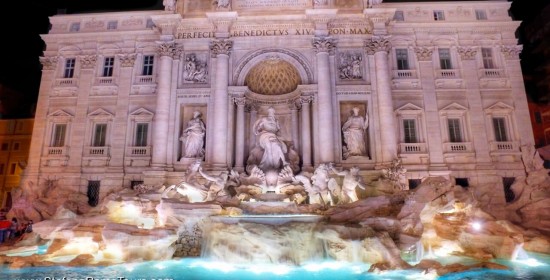
Welcome to Stefano Rome Tours, Rome’s premier tour company for private Rome Tours and Rome private excursions from Civitavecchia.
Today, we invite you to delve into the enchanting world of one of Rome's most iconic landmarks—the Trevi Fountain, featured in most of our Rome sightseeing tours which are one of the best ways to get around Rome.
While this stunning masterpiece is known and admired by millions of visitors from around the globe, there are fascinating facts and hidden stories that lie beneath its surface.
Join us as we uncover 15 fascinating facts about the Trevi Fountain that you probably did not know. From ancient myths to historical anecdotes, these intriguing insights will add a new layer of wonder and appreciation to your next visit to this magnificent symbol of the Eternal City.
15 Fascinating Facts about Trevi Fountain
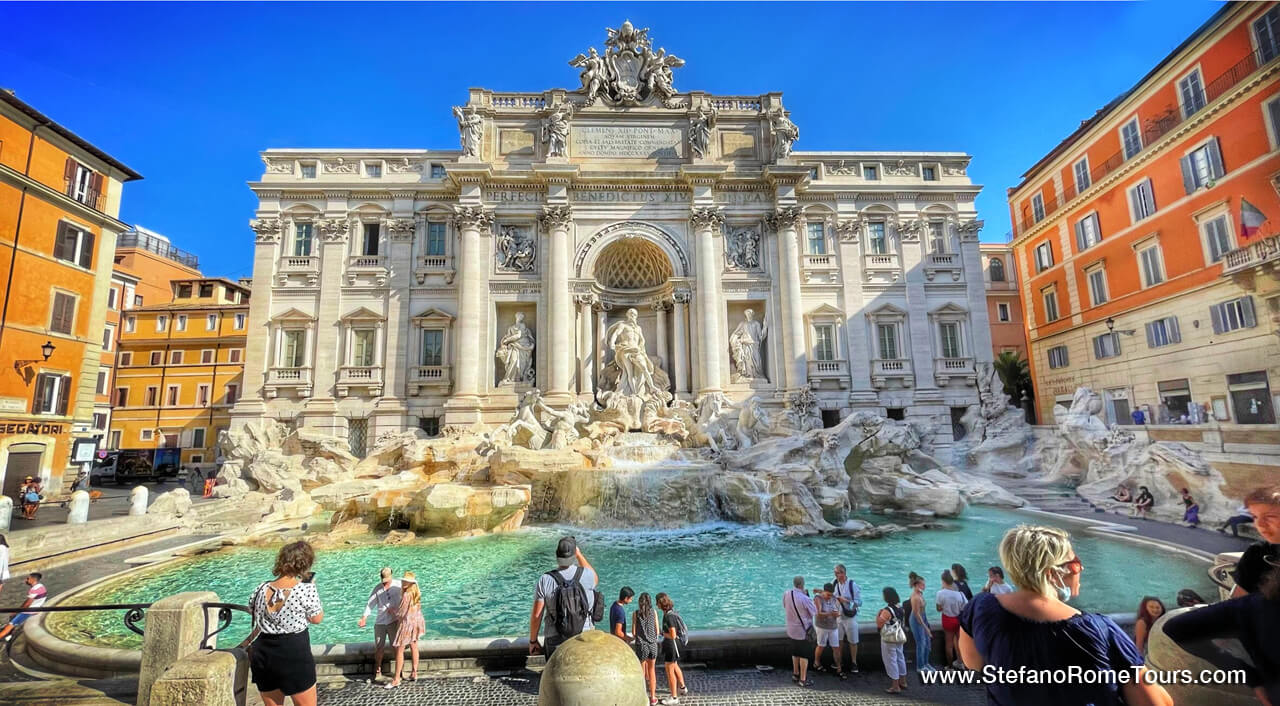
1. How did Trevi Fountain get its name?
The original name of the Trevi Fountain was "Fontana di Trevi" derived from its location at the junction of three roads, "tre vie" in Italian, and “trivium” in Latin.
2. The Trevi Fountain is the largest Baroque fountain in Rome
The Trevi Fountain is indeed the largest Baroque fountain in Rome, both in terms of height and size. The fountain stands at an impressive height of approximately 26.3 meters (86 feet) and spans about 49.15 meters (161.3 feet) in width. Its massive dimensions make it a prominent and visually striking landmark in the heart of the city.
Its monumental size and stunning beauty have solidified its reputation as a masterpiece of Baroque art and one of Rome's most iconic landmarks.
3. The source of the Trevi Fountain water is one of the oldest in Rome
Located at the intersection of three roads, which inspired its name "Trevi," the iconic Trevi Fountain stands as the glorious endpoint of the ancient Aqua Virgo aqueduct. Dating back to 19 BCE, this aqueduct holds a captivating legend: it is believed to be named after a stunning virgin who guided dehydrated soldiers to a spring that once flowed on this exact spot.

Serving as a lifeline to the vibrant heart of Rome, the Aqua Virgo supplied water to the bustling city center and its numerous public baths, showcasing the importance of this remarkable engineering feat.
The massive Aqua Virgo can still be seen in the fascinating Park of the Aqueducts in Rome.
4. The sea god in the fountain is not Roman!
Contrary to expectations, the captivating centerpiece of the Trevi Fountain deviates from the anticipated presence of Neptune, the Roman god of freshwater. Instead, it pays homage to Oceanus, the Greek deity of the sea.
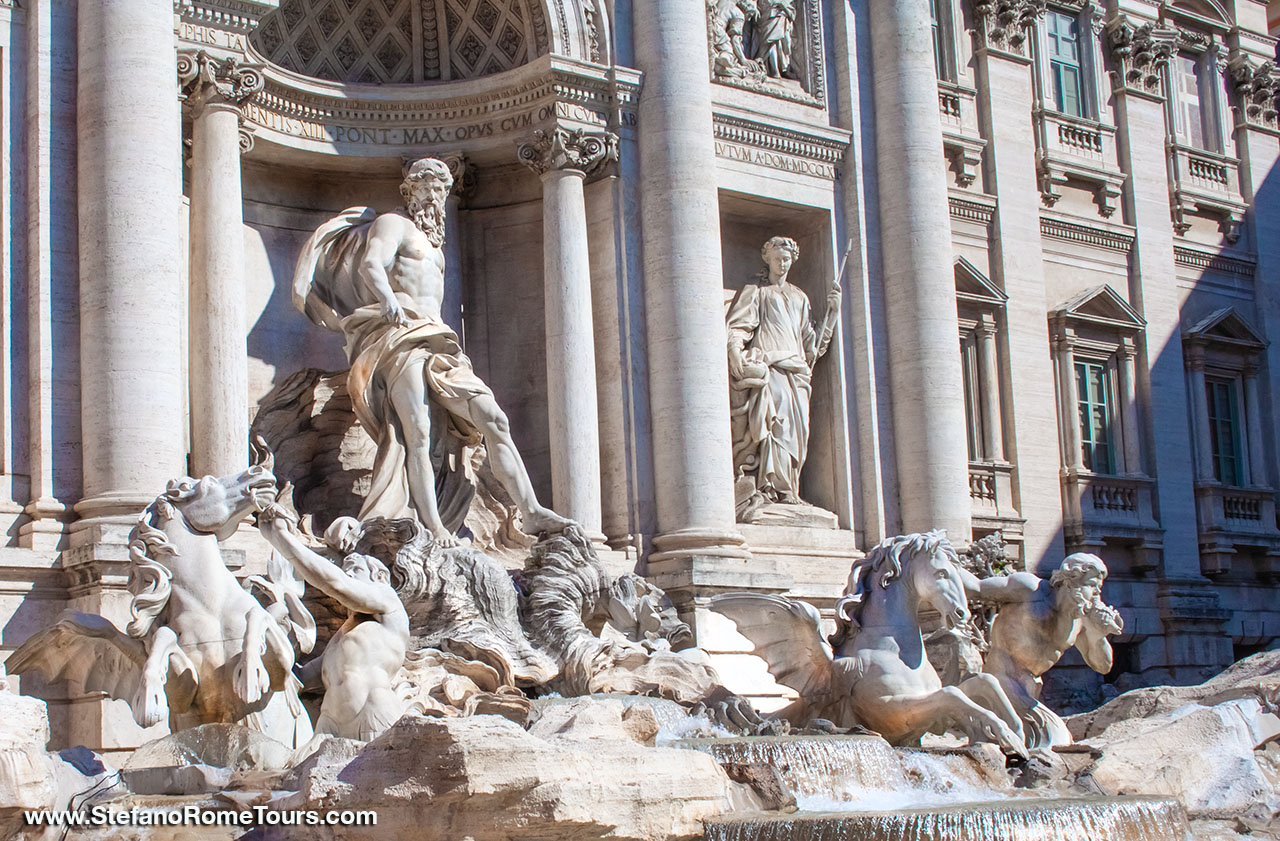
Evident in the fountain's design, Oceanus is flanked by majestic seahorses and mythical mermen, symbolizing the diverse and captivating characteristics of both rivers and seas. This intriguing choice of deities adds an unexpected touch of mythology and intercultural influence to the fountain's artistic composition.
5 Allegorical Sculptures of Trevi Fountain
The Trevi Fountain is a magnificent work of art adorned with intricate sculptures that embody various allegorical figures and symbols, each contributing to the fountain's deeper meaning and narrative.
-
Abundance:
One of the key figures represented in the Trevi Fountain is "Abundance" (Abbondanza). This figure is depicted as a woman holding a horn of plenty or a basket overflowing with fruits, symbolizing prosperity, wealth, and the bountiful blessings of nature. A relief above this statue depicts Agrippa instructing men to build the aqueduct.
-
Health:
Another allegorical figure seen in the fountain is "Health" (Salubrità). This figure is often portrayed as a youthful and radiant woman holding a cup or vessel, representing the importance of clean and pure water for the well-being of the people of Rome.
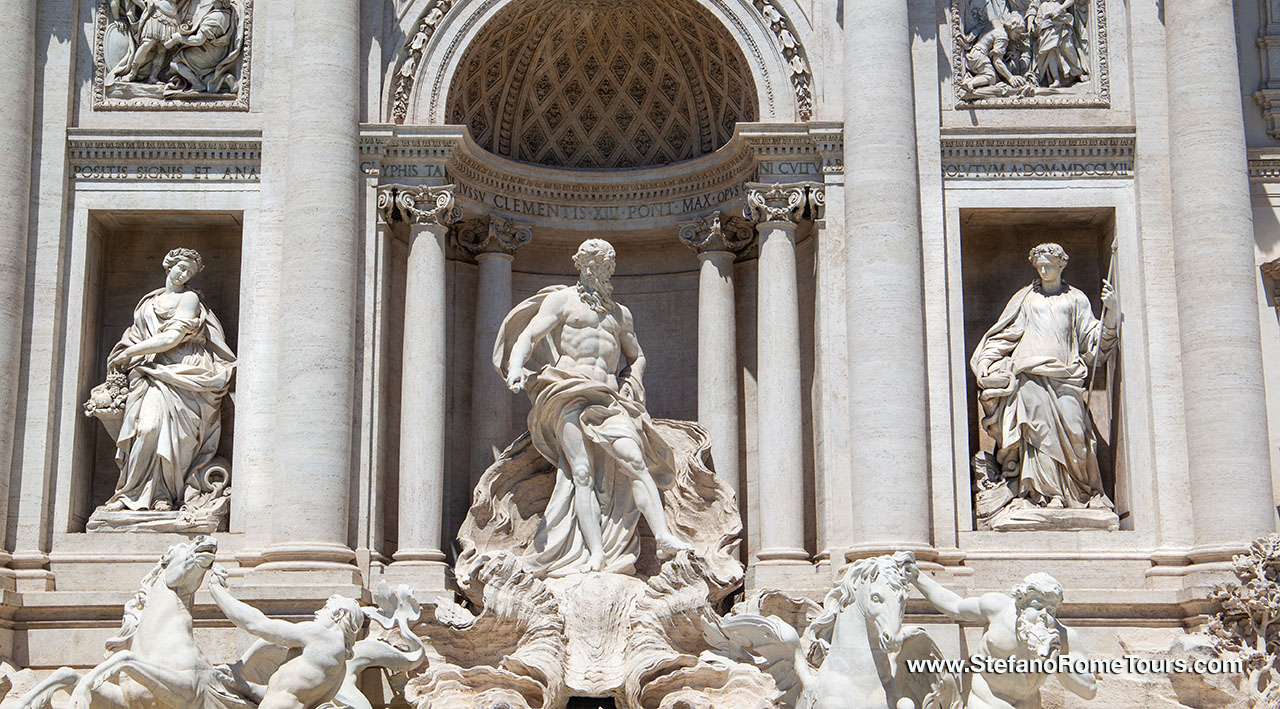
-
Fertility:
The Trevi Fountain also includes representations of fertility. These figures symbolize the idea of abundance, renewal, and the perpetuation of life. Each statue exudes a unique symbolism, connecting the fountain to the abundance and blessings of nature.
The first statue, "Abundance of Fruit", delicately holds a horn, a representation of the generous harvests and the plentiful fruits that the earth bestows upon us. It serves as a reminder of the rich rewards of the land and the blessings it provides.
Next, the "Fertility of Crops" statue stands tall with ears of wheat in hand, epitomizing the essential role of agriculture in sustaining life. It signifies the prosperity brought about by the cultivation of crops, which have been the lifeblood of societies throughout history.
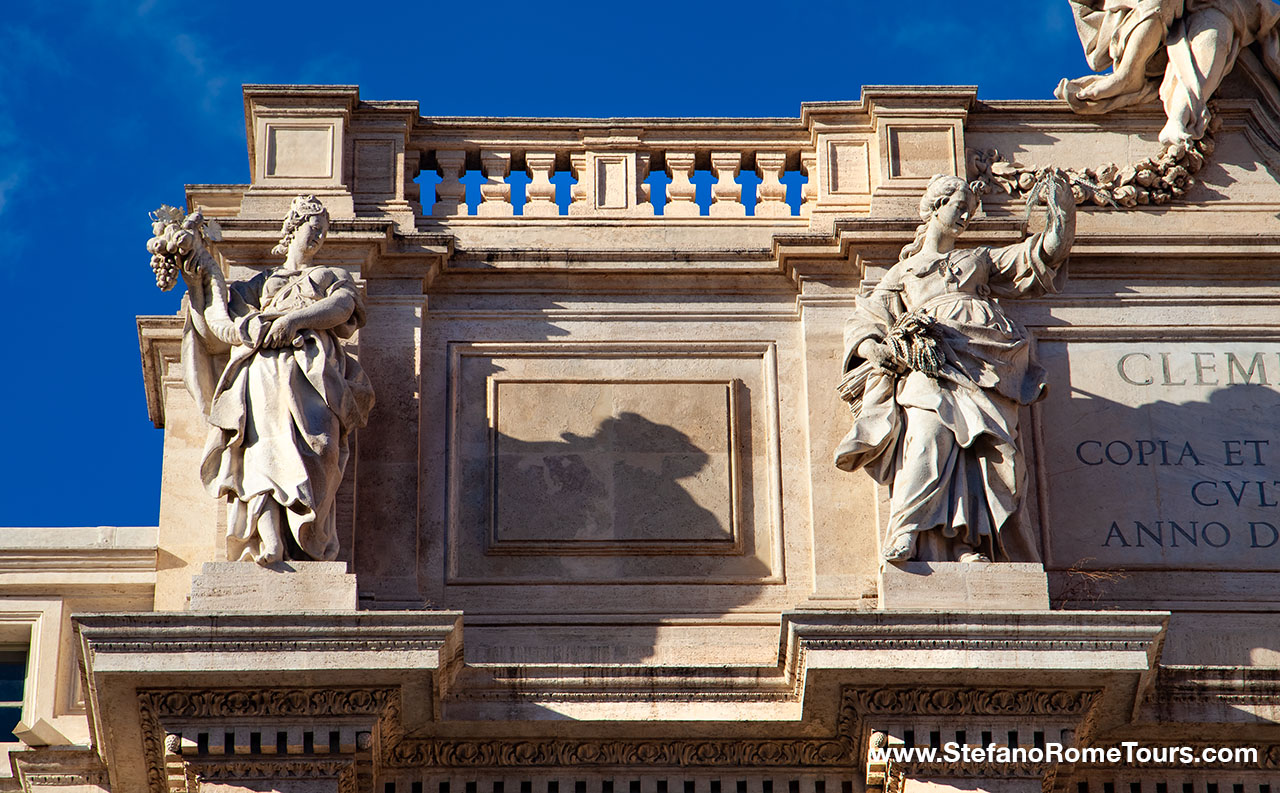
The third figure, "Products of Autumn", gracefully holds a cup adorned with grapes, symbolizing the fruitful harvest of autumn. It pays homage to the joyous bounty reaped during this season when vineyards yield their succulent grapes for winemaking and celebration.
Finally, the "Joy of the Gardens" statue is adorned with an array of vibrant flowers, representing the beauty and vivacity of nature's gardens. It embodies the sheer delight and wonder that nature brings, captivating our senses with its colors and scents.
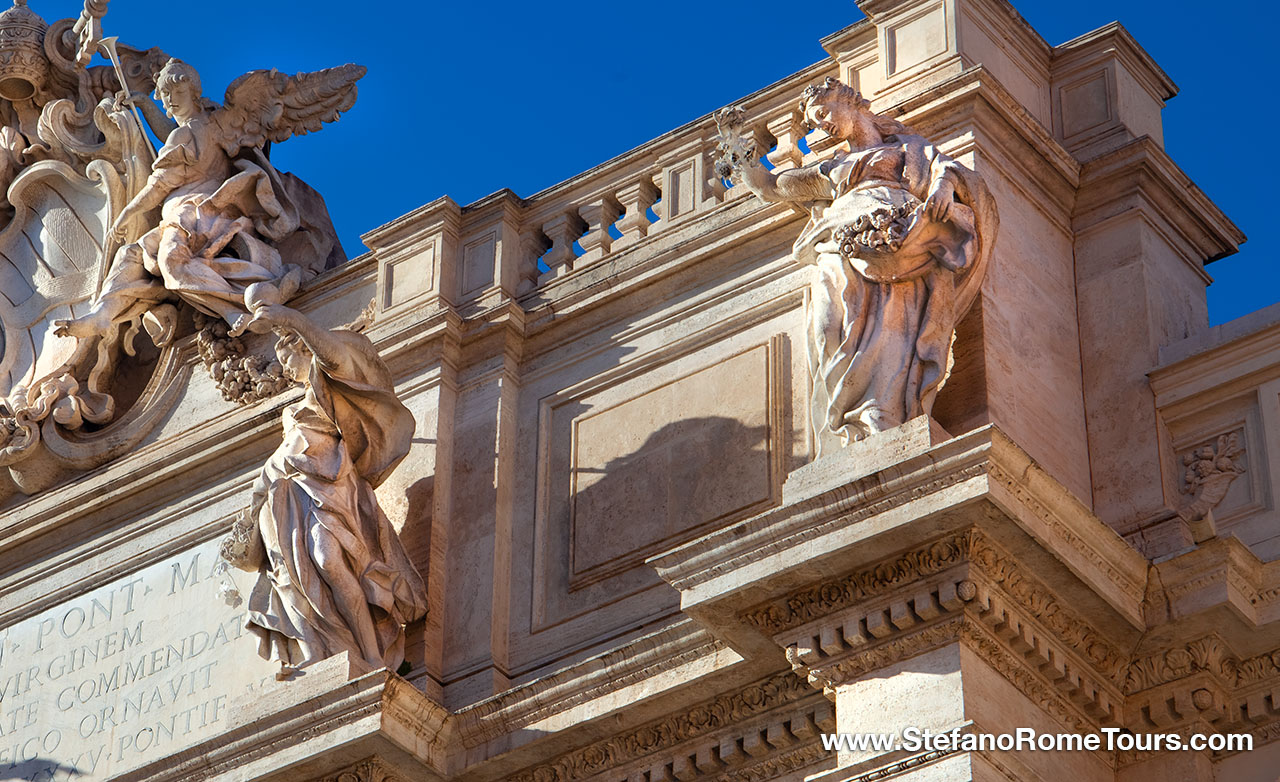
Together, these allegorical figures represent the fundamental elements essential for the well-being and prosperity of a community: abundance, good health, fertility, and the life-giving properties of water. They are beautifully integrated into the overall design of the Trevi Fountain, adding depth and significance to this remarkable work of Baroque art.
The sculptures also contribute to the fountain's harmonious and balanced composition. The dynamic poses, intricate details, and graceful lines of the statues capture the essence of Baroque art, creating a captivating spectacle for visitors to admire.
6. Two Architects, One Masterpiece: Bernini's Vision, Salvi's Triumph
Nicola Salvi was not the original architect of the Trevi Fountain. In the 1640s, Pope Urban VIII commissioned Gian Lorenzo Bernini to transform the square and fountain near Palazzo Barberini into a striking focal point visible from the Quirinal Palace.
Bernini began the grand water exhibit, financed by a wine tax on Romans, and expanded the square, realigning the fountain to face the Quirinale. However, funds ran out due to the pope's war with the duchy of Parma and Piacenza, leading to project abandonment after Urban VIII's death.
In 1731, Pope Clement XII took charge, initiating a competition won by Nicola Salvi for the Trevi Fountain project. The construction combined Baroque and Bernini influences, telling the tale of Acqua Vergine through seamless architecture and sculpture, chosen for both artistic vision and cost-effectiveness.
7. The Trevi Fountain was Financed by LOTTO
The works were financed with 17,647 scudi (an old Italian currency that is no longer in use), and a significant portion of these funds came from the reintroduction of the lottery game in Rome.
8. Legend of Ace of Cups (a tale of revenge)
The Trevi Fountain boasts a striking travertine vase leaning against its balustrade, known intriguingly as the "Ace of Cups" from the Italian card game Scopa.
In this captivating game, the "Asso di Coppe" or Ace of Cups, carries special significance as players strive to clear the table and claim victory with a decisive final card. The toponym finds its roots in the vase's resemblance to cups on playing cards, yet a deeper tale unfolds—a persistent barber's grievances.
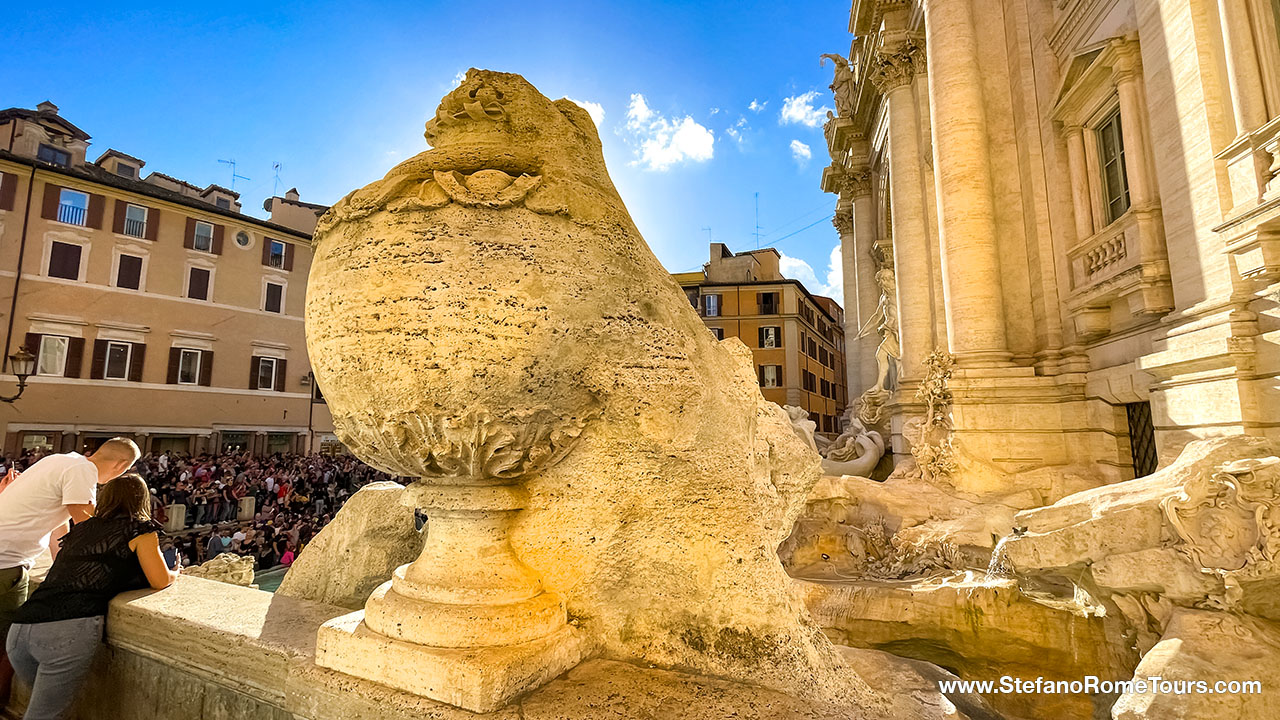
Tradition holds that the Trevi Fountain's construction encroached upon the barber's shop, leading him to criticize the project, architect Nicola Salvi, and its perceived flaws. Having enough of this pesky barber, the resourceful architect crafted the large travertine vase, the so-called Ace of Cups, and strategically placed it to obstruct the barber's view and dampen his complaints. Ironically, the vase also resembled the containers once used by barbers in their trade.
Whether rooted in truth or legend, this element reminds us that Rome's grand monuments conceal untold stories, inviting us to uncover the hidden facets beneath their renowned beauty.
9. The architect, Nicola Salvi, never saw his completed fountain
Tragically, Nicola Salvi never had the chance to witness his grand plan come to life. Commencing construction in 1732, Salvi dedicated himself to the project until his untimely passing in 1751.
A team of talented sculptors, including Pietro Bracci, Filippo della Valle, Giovanni Grossi, and Andrea Bergondi, worked diligently to complete the fountain's adornments. Giuseppe Pannini, an architect, ultimately oversaw the finishing touches, and the Trevi Fountain was officially inaugurated on 22nd May 1762 by Pope Clement XIII.
Made primarily of Travertine stone quarried from Tivoli, located about 35 kilometers east of Rome, the fountain stands as an enduring symbol of beauty and history in the Eternal City.
10. The Trevi Fountain starred in famous movies
The Trevi Fountain's majestic allure has not only captured the hearts of visitors but also made its mark in the world of arts and culture.
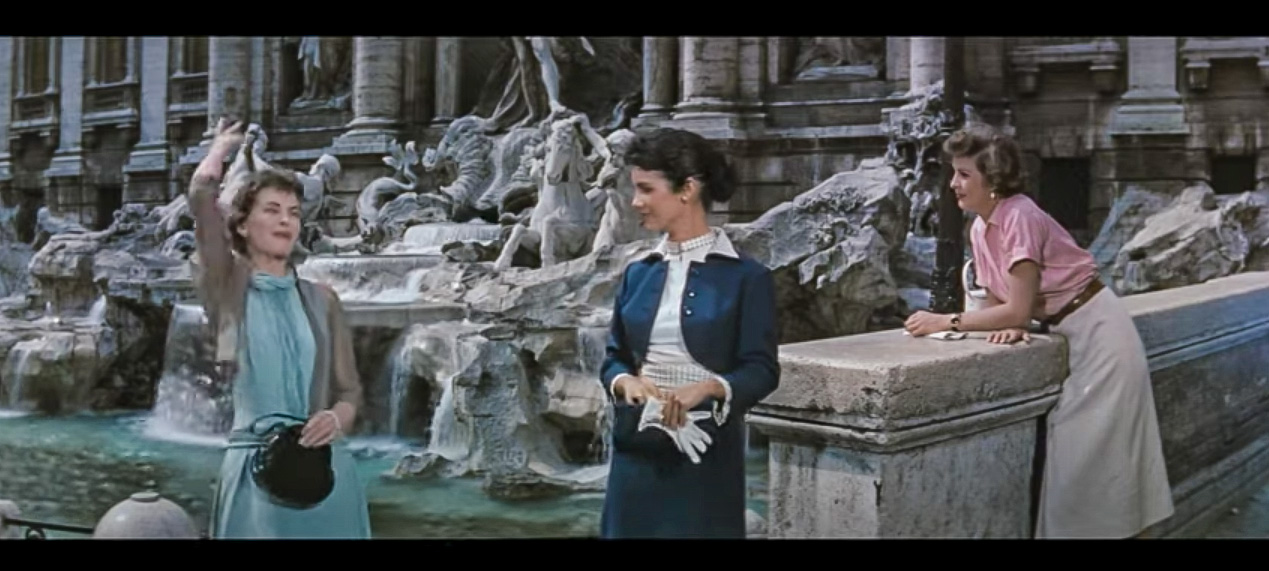
The fountain's enchanting presence has graced the silver screen, leaving an indelible impression on moviegoers.
From Fellini's iconic "La Dolce Vita" (1960) to the romantic drama "Three Coins in the Fountain" (1954) and the timeless classic "Roman Holiday" (1953) starring Audrey Hepburn, the Trevi Fountain has played a starring role in some of the most beloved films of all time.
More recently, it lent its charm to "The Lizzie McGuire Movie" (2003), further cementing its status as a cinematic gem with a younger generation.
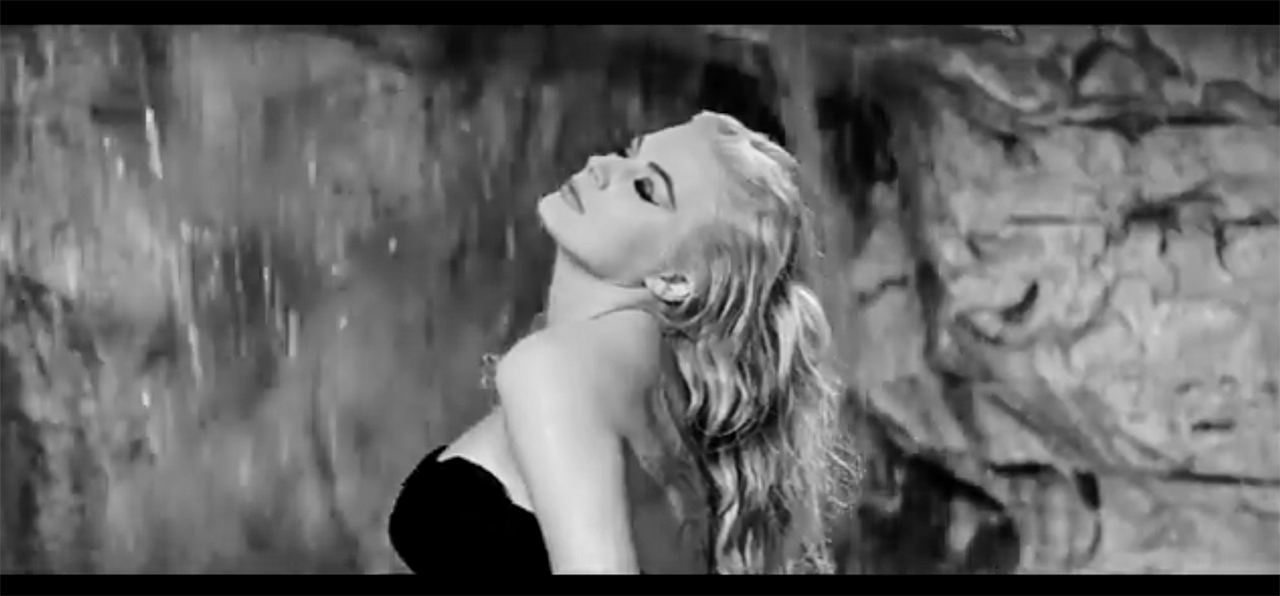
Beyond its cinematic fame, the Trevi Fountain has been immortalized in the pages of literature.
In Nathaniel Hawthorne's renowned novel "The Marble Faun," the fountain serves as an evocative backdrop, adding depth and allure to the story's unfolding drama. Furthermore, the fountain's grandeur has inspired musical compositions, with Ottorino Respighi's symphonic poem "Fountains of Rome" beautifully capturing the essence and enchantment of this iconic landmark.
11. Tossing a coin in the Trevi fountain is an ancient pagan tradition
The most well-known and enduring tradition at the Trevi Fountain involves tossing a coin into the water. To partake in this tradition, one must close their eyes, turn their back towards Palazzo Poli, and make the coin toss. The belief is that this act will ensure a future return to Rome.
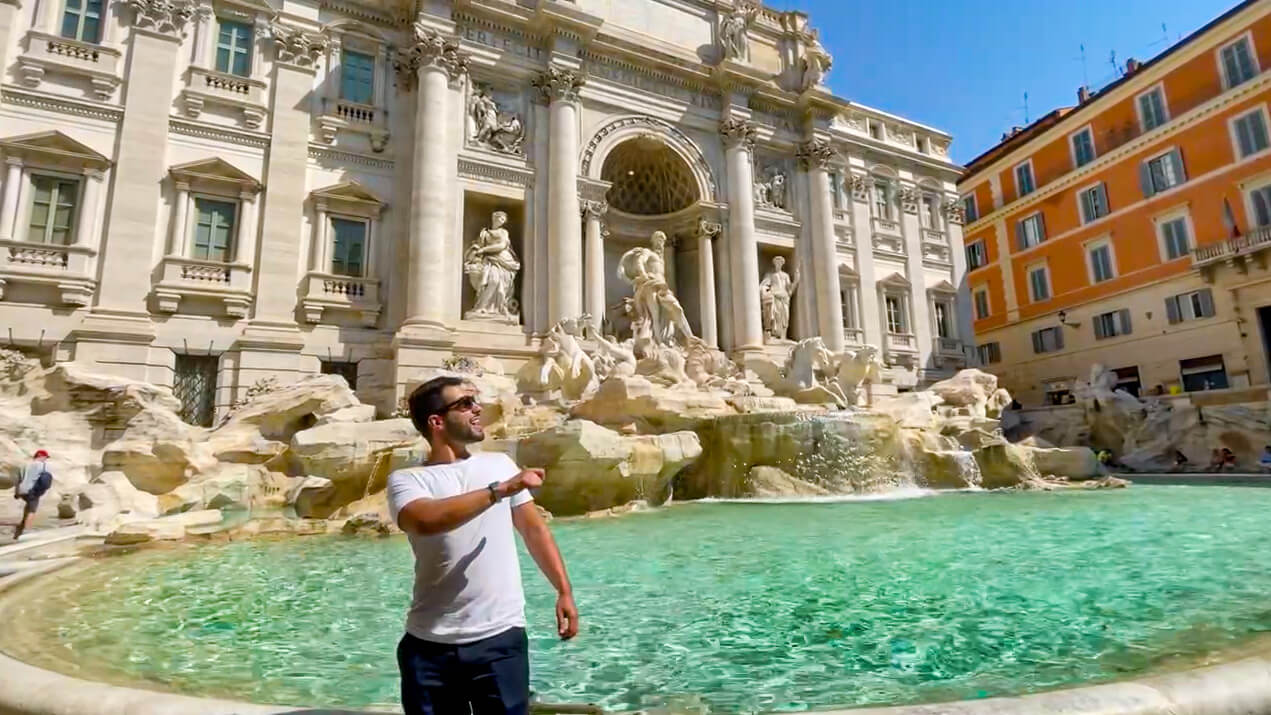
Throughout history, the act of tossing coins into fountains has been intertwined with the vital role of water for human survival. In earlier times, the scarcity of potable water in various regions made clean water sources appear almost as divine offerings to early European tribes. Wells and fountains, often adorned with deity statues, held a sacred significance, and the ancient practice of gifting coins to appease gods or fulfill desires persisted in this context.
The Celts and Germanic peoples, closely linked in origin, believed in the mystical powers of wishing wells, considering them guarded by spirits residing at the water's source. Speaking desires aloud over these sources was believed to bring them to fruition through the favor of these spirits.
A notable instance of such a tradition was found in Carrawburgh, Northumberland, where patrons offered coins and valuables to the well associated with the goddess Coventina. The practice of beseeching the well's divinity or spirit with offerings became commonplace, with the hope of receiving blessings and wishes fulfilled.
The Trevi Fountain exemplifies this tradition, initially believed to ensure good health when coins were thrown into the water. Over time, this practice evolved into the contemporary belief that tossing a coin over your shoulder into the fountain guarantees a future return to Rome.
The credit for introducing the coin toss at the Trevi Fountain goes to Wolfgang Helbig, a 19th and 20th-century German archaeologist residing in Rome. Helbig, inspired by these ancient rituals, embraced them as a symbolic farewell for his guests departing from the Eternal City.
12. Coins from Trevi Fountain go to charity
Beyond the whimsical wishes for safe returns, romance, and weddings, the coins tossed by countless visitors have taken on a humanitarian purpose.
Each day, more than €3,000 finds its way into the crystal-clear waters of the fountain, left behind by those who believe in the power of small acts of kindness.
In 2001, Rome’s mayor Francesco Rutelli halted any private taking of coins from the Trevi. The money is collected daily and given to Rome’s Catholic Charity Caritas which uses these seemingly trivial contributions towards providing food, shelter, and essential social programs for Rome’s poverty-stricken communities
If you wonder if people are tempted to take coins from the fountain, it’s considered illegal to remove coins from the Trevi Fountain.
13. Trevi Fountain’s Major Restoration:
Trevi Fountain faced the harsh consequences of the brutal winter of 2012, with pieces of its cornice falling, signaling an urgent need for restoration. The preservation efforts that ensued were made possible through the generous support of the renowned luxury brand, Fendi.
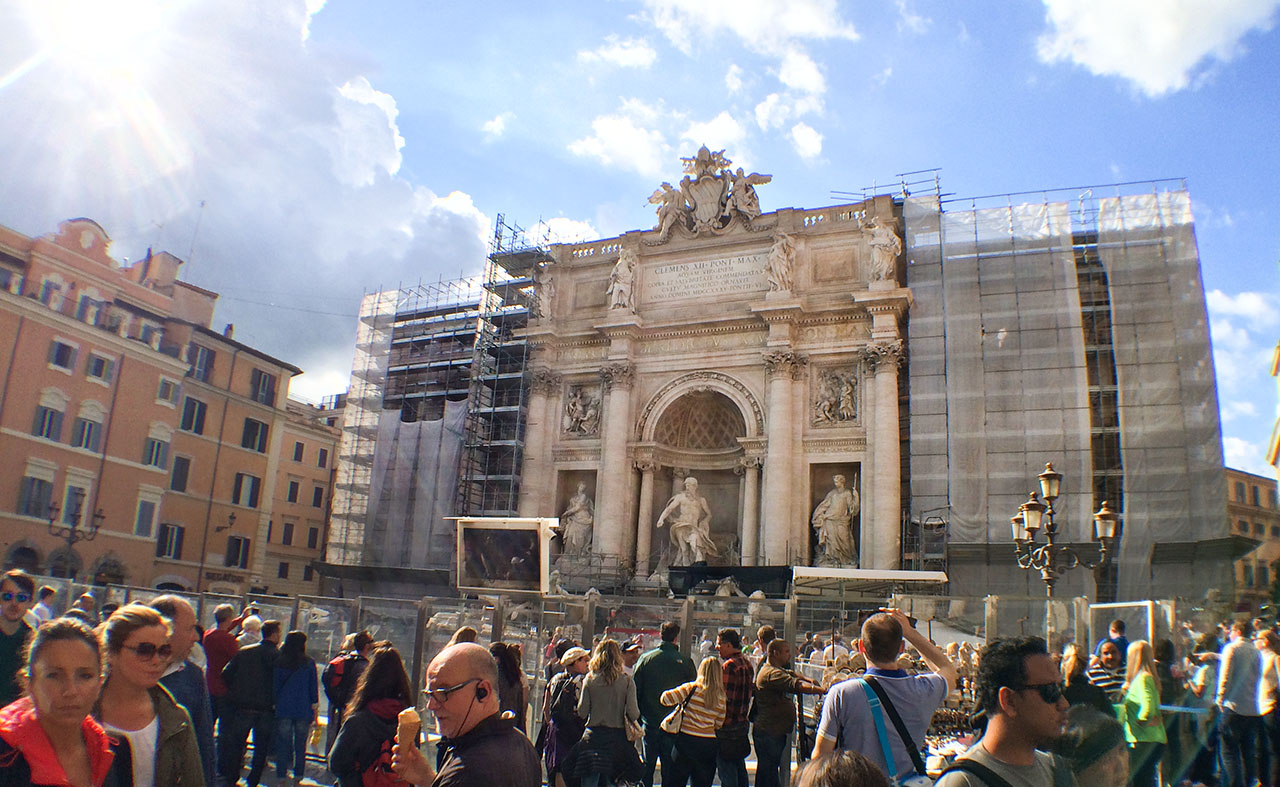
In June 2014, the fountain's iconic flow was temporarily stilled, and the structure was shrouded in scaffolding—a protective cocoon that would envelop it for a remarkable 17-month duration. Despite the renovations, the beloved tradition of coin-throwing persisted, as a thoughtful basin was added at its base to uphold the cherished practice.
With dedication and craftsmanship, the restoration was completed in November 2015, when the majestic Trevi Fountain emerged anew, unveiled in all its resplendent glory. The profound investment of €2.2 million by Fendi breathed new life into the landmark, preserving its historical splendor for generations to come.
As the emerald waters of the Trevi Fountain gracefully flowed once again, the heart of Rome rejoiced, and the city's timeless symbol of grandeur stood resilient, thanks to the invaluable collaboration between history and fashion, tradition and innovation.
14. One Person's Lifetime Water Usage Equals 1 Day's Flow at Trevi Fountain
The Trevi Fountain boasts an astonishing daily output of over 2.8 million cubic feet of water, a sight that never fails to dazzle its beholders. To grasp the sheer magnitude of this gushing aquatic spectacle, let us draw a striking comparison to the average water consumption of an individual in the United States.
According to estimates by the U.S. Environmental Protection Agency, an average American utilizes approximately 82 gallons of water per day for various household activities.
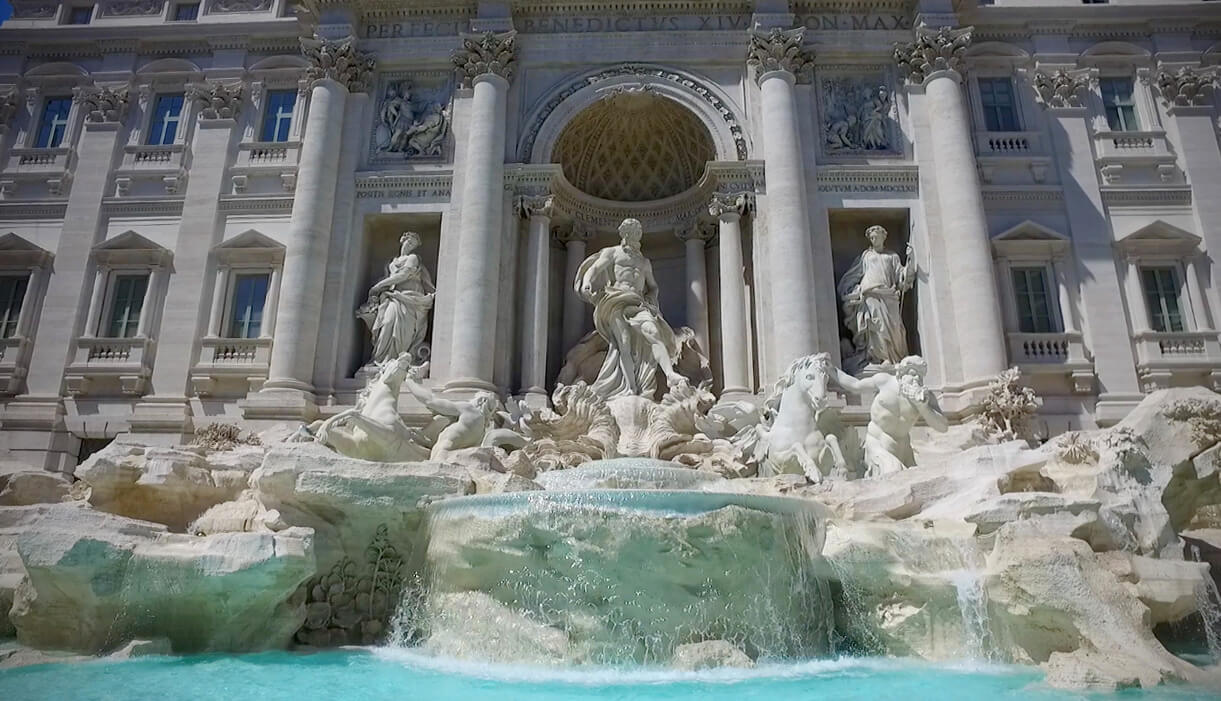
Now, envision a solitary person attempting to consume the same volume of water that cascades through the Trevi Fountain within a mere 24-hour period. It would be an audacious feat, as this colossal quantity surpasses the bounds of human capacity and reaches extraordinary proportions. In fact, to achieve such a water intake, one would need to sustain this insatiable consumption for nearly seven centuries of continuous water consumption.
The juxtaposition of these numbers serves as a vivid testament to the grandiosity of the Trevi Fountain's water flow. As the waters of the fountain flow unabatedly, it is crucial to note that this awe-inspiring display is not wasteful; rather, it embodies sustainability through responsible recycling practices. The water's journey, from its grand debut at the Trevi Fountain to its thoughtful reuse, encapsulates a profound reminder of the importance of preserving and cherishing our planet's precious resources.
In the heart of Rome, the Trevi Fountain's majestic cascade not only enchants the soul but also echoes the timeless message of conservation and environmental stewardship. A captivating testament to the grandeur of human ingenuity, the fountain's enduring presence serves as a poignant symbol of the need to cherish, protect, and appreciate the gifts bestowed upon us by nature.
15. Swimming in the fountain is prohibited in Trevi Fountain
While Anita Ekberg's legendary dip in Federico Fellini's "La Dolce Vita" has immortalized the notion of indulging in this fountain's enchanting embrace, it is essential to remember that such privileges are reserved for the silver screen.

As you stand before the majestic Trevi Fountain, the temptation to take a refreshing plunge (or refill your water bottle) on a scorching summer day may be irresistible, but bear in mind that authorities uphold a strict zero-tolerance policy against swimming in this historical gem.
One tourist learned this lesson firsthand, recounting how the allure of the fountain's waters proved too tempting to resist. However, as they soon discovered, the experience of facing the police's request for identification and being slapped with a substantial fine of €450 was a less glamorous reality.
Beyond the financial penalty lies the potential damage that unauthorized swimming could inflict on the fountain's delicate structure, threatening to compromise the enchanting beauty that has captivated hearts for centuries. So, as you savor the sight of this timeless masterpiece, let it serve as a gentle reminder to relish the fountain's magic from a respectful distance.
ALSO READ:
- Best Souvenirs to bring home from Rome
- 10 most popular Rome streets you should not miss
- Traveling in the summer? Check out the best places to taste the Grattachcca Romana!
As we conclude this journey of discovery into the fascinating facts about Trevi Fountain, we hope you've been captivated by its rich history and intriguing legends. From its ancient aqueduct origins to the iconic coin-tossing tradition, the Trevi Fountain remains a symbol of romance, beauty, and timeless allure.
Should you find yourself yearning to be a part of this enchanting tradition, remember that on our private Rome Tours, Rome pre-Cruise tours, Rome Shore Excursions from Civitavecchia, and Post Cruise Rome Tours from Civitavecchia, our guests have the wonderful opportunity of visiting the Trevi Fountain and participating in the timeless coin-tossing ritual. Embrace the magic of this ancient city, and let your wishes become intertwined with the history and allure of the Trevi Fountain.
We look forward to welcoming you on an unforgettable adventure through Rome, where love and wonder are always in the air.
